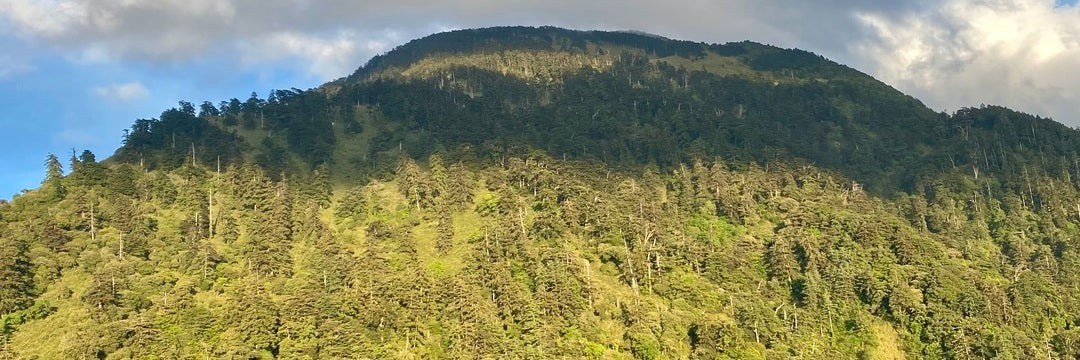
Li Shan High Mountain Oolong Tea | Eco-Cha Tea Club

Batch 107 of the Eco-Cha Tea Club is a Li Shan High Mountain Oolong Tea from fall 2024 harvest. The Eco-Cha Tea Club is mostly about finding unusually distinct batches of tea that are not generally available on the market, with the goal of continually offering a different character of tea from month to month. Furthermore, we want to offer Taiwan's renowned specialty teas that are the best of their kind — in the world. Li Shan High Mountain Oolong Tea is a prime example. Check the Tasting Notes post for a detailed description with video! The farm in the photo above is where our Li Shan tea is produced. It is situated directly above a reservoir at the top of a ridge — receiving both moisture and abundant sunshine.

Above is the highest elevation tea factory on the island of Taiwan, where our Li Shan tea is made. In other High Mountain Tea producing regions such as Shan Lin Xi and Alishan, high elevation tea factories are less ideal because they are usually socked in with thick fog by early afternoon. This inhibits the essential and initial phase of Oolong Tea making — solar withering. Li Shan is different in that the climate in this region is more akin to an alpine climate in North America. Due to it's elevation of 2000m (6562 ft.) and above, it's drier — with much more diurnal temperature variation. Strong sun at noon, and low temps at night. This is why Li Shan Tea stands alone. It's got substance that only these climate conditions can produce.

This second flush batch of tea was harvested in early August. Spring rains arrived late and temperatures remained cooler than normal through April. We had frequent afternoon thunderstorms throughout the summer, interspersed with clear nights and sunny mornings. Our spring 2024 batch of Li Shan High Mountain Oolong offered a substantial floral/pastry aromatic profile and a delicate, balanced and smooth brew with floral and savory notes. This fall batch is similar in character, with slightly more oxidation — offering a sweet/savory profile with a subtle floral finish. This is one example of how climate change has resulted in seasonal harvests becoming less distinct, and less consistent than they used to be. It's all fine quality tea, but less determined by consistent annual seasons, and more determined by individual seasonal growing conditions.

Twenty or thirty years ago, spring and winter harvests were very distinguished in their character and flavor profile. They also were noticeably better quality than the "in between" summer/fall harvests. In the last decade or more, this seasonal consistency has shifted. Consequently, we have become more and more dedicated to assessing each season on its own, taking into account the weather patterns during the growth period — which we are able to track, since we live here and are in continuous contact with our sources. We are grateful to be able to share our experience of the Taiwan Tea industry from an "on the ground" perspective in order to allow our tea club members to gain a better understanding of this culture from season to season and year to year.
LET US KNOW!
Please post any questions or comments you may have in the comments section below!
SUBSCRIBE!
If you enjoyed this post and would like to hear more about the specialty tea industry here in Taiwan, follow us on YouTube, Facebook, and Instagram and please subscribe to our newsletter. Subscribe now and get US$5 off your first order.

